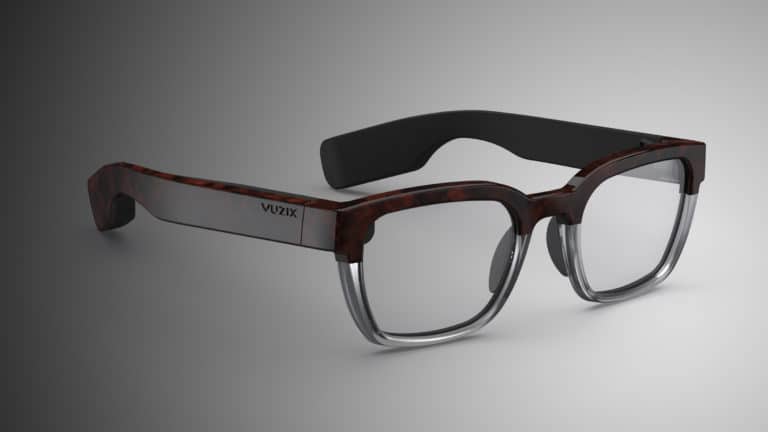
A version of this article first appeared in the WEF blog, authored by Dr. Helen Papagiannis.
Back in 1996, Mark D. Weiser wrote the critical paper The Coming Age of Calm Technology along with John Seely Brown. But what is calm technology?
Calm technology can be summarized as invisible and natural to use; it doesn’t interrupt or get in the way of life. It happens in the background and appears when you need it, keeping you connected to what is truly important.
This is how I personally see this new era of augmented reality (AR) and spatial computing evolving: it’s not about being lost in our devices, it’s about technology receding into the background so that we can engage in human moments while being more deeply immersed in the real world that surrounds us.
Calm technology is anticipatory and adaptive
Weiser described how calm technology is anticipatory and adaptive, remaining quietly aware until knowing when it is needed to spring to action without instruction by codifying your context.
Apple’s Vision Pro headset is a strong contemporary example of this. Apple has developed a novel technology unique to Vision Pro called EyeSight, which reveals your eyes on the display when someone approaches and simultaneously lets you see the person without having to remove the headset.
This means you’re at once connected to the physical and digital environments you’re in, blending worlds in new ways to flow between tasks and activities.
As we continue to augment our bodies with wearable devices and inch closer toward a (near) invisible interface, calm technology has immense potential to shape our interactions and add value to our daily lives.
Apple’s Vision Pro is a massive leap forward in human-computer interaction with the ability to navigate apps and digital content using only your eyes, hands, and voice — no controller is required.
This creates a comfortable and natural way to interact that is an extension of how you engage with physical objects, for example reaching out to touch and move them with your hands, without an intermediary tool or peripheral.
Steve Mann, known as the father of wearable computing, has been designing, building, and wearing personal computers since the 1970s. Mann notes how as humans we’ve always contorted ourselves around computers — he uses the analogy of a pretzel — whereas computers should be wrapped around us.
Vision Pro separates itself from other headsets with its natural and intuitive interface and the ability to dial between reality, choosing the best level of immersion for the task at hand.
From being able to glance at a notification in physical reality, to completely filling the entirety of your space in a meditation or entertainment experience, you can choose and customize your reality.
Augmented reality extends human capabilities
In my book Augmented Human: How Technology Is Shaping The New Reality, I discuss how AR isn’t about replacing reality or supplanting the human imagination, it’s about extending our human capacities.
Let’s consider the design of a transparent kayak for a moment. A clear kayak functions as a large open window, giving the illusion of the kayak (interface) disappearing. It creates a sense of immersion for the kayaker, via an invisible barrier, and fosters a feeling of being more connected to one’s surroundings.
This clear kayak is significant and symbolic of the opportunity for augmented reality on eyewear and spatial computing beyond the experiences we are accustomed to on our smartphones today.
When I first began designing AR experiences 18 years ago, we were still tethered to the desktop via a computer monitor and webcam. The technology eventually migrated to smartphones and tablets, and today it’s moving to eyewear and beyond. Ultimately, the AR screen will disappear and we will be immersed directly in this new hybrid reality.
Here are five design principles that I envision will encourage best practices for AR experiences on eyewear:
Relevant
Strive for contextual experiences that are connected to and enhance a person’s surroundings. Consider the user’s location, actions, and time of day. Designing with the user’s context in mind is paramount to ensure that technology complements and enhances rather than obstructs.
Rooted in reality
Aim for at least 60% of the real-world environment to be visible. Be mindful of AR content fully blocking out the user’s physical surroundings. Consider thoughtful ways to socially interact with others.
Enable with ease
Avoid cluttering the user’s field of view with visual information. Use spatial audio and/or haptics (touch feedback) on connected wearables when appropriate to minimize cognitive overload, particularly with notifications. Consider how the experience can be distributed across the senses.
Discover with delight
Encourage exploration of the user’s surroundings with thoughtful graphics and multi-sensory cues that inspire, not distract. Use mini apps (like App Clips) to help people accomplish everyday tasks quickly with minimal effort. Only send relevant notifications in response to user actions and surroundings.
Weiser declared, “The scarce resource of the twenty-first century will not be technology; it will be attention.”
As we continue to augment our environments, bodies and minds with new technologies, our directed focus on the things that truly matter to us will be key.
We’re at a pivotal moment in augmented reality’s evolution where we must ask, now that we can design anything, what will we create? It is my hope that we will use these newfound capabilities to best enrich, evolve and elevate humankind.

Dr. Helen Papagiannis, Ph.D. is recognized as a world-leading expert, having worked with augmented reality (AR) for over 18 years as a designer, researcher, consultant, and keynote speaker. She is the author of “Augmented Human: How Technology Is Shaping The New Reality.”
Header image credit: Vuzix
